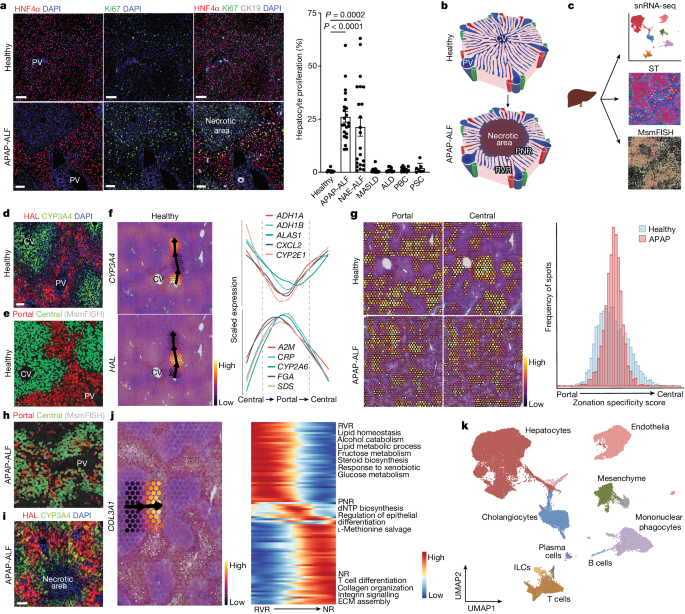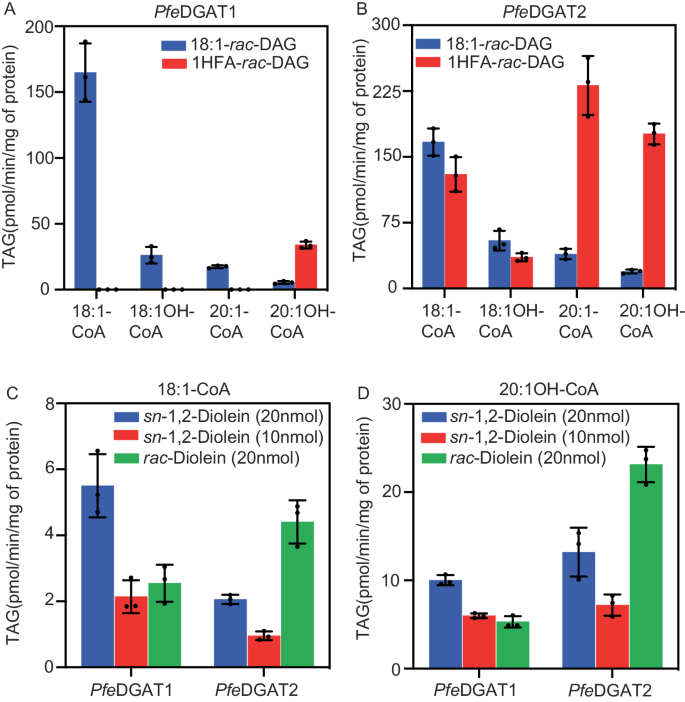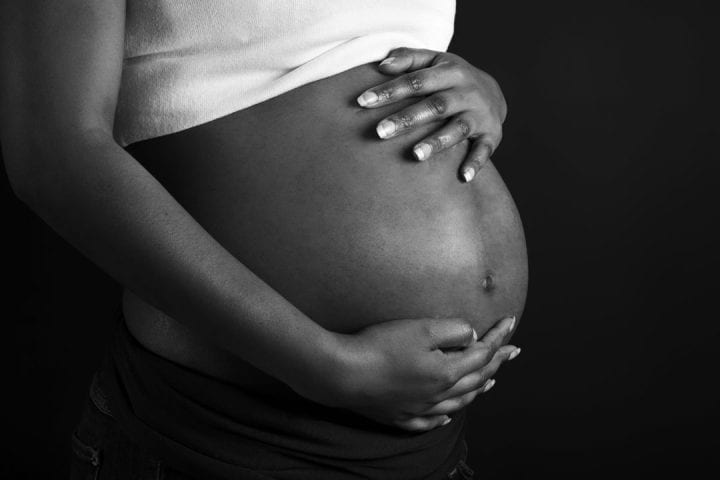2024-05-01 エディンバラ大学
<関連情報>
- https://www.ed.ac.uk/news/2024/study-pinpoints-cell-that-helps-liver-heal
- https://www.nature.com/articles/s41586-024-07376-2
ヒト肝臓再生のマルチモーダル解読 Multimodal decoding of human liver regeneration
K. P. Matchett,J. R. Wilson-Kanamori,J. R. Portman,C. A. Kapourani,F. Fercoq,S. May,E. Zajdel,M. Beltran,E. F. Sutherland,J. B. G. Mackey,M. Brice,G. C. Wilson,S. J. Wallace,L. Kitto,N. T. Younger,R. Dobie,D. J. Mole,G. C. Oniscu,S. J. Wigmore,P. Ramachandran,C. A. Vallejos,N. O. Carragher,M. M. Saeidinejad,A. Quaglia,… N. C. Henderson
Nature Published:01 May 2024
DOI:https://doi.org/10.1038/s41586-024-07376-2

Abstract
The liver has a unique ability to regenerate1,2; however, in the setting of acute liver failure (ALF), this regenerative capacity is often overwhelmed, leaving emergency liver transplantation as the only curative option3,4,5. Here, to advance understanding of human liver regeneration, we use paired single-nucleus RNA sequencing combined with spatial profiling of healthy and ALF explant human livers to generate a single-cell, pan-lineage atlas of human liver regeneration. We uncover a novel ANXA2+ migratory hepatocyte subpopulation, which emerges during human liver regeneration, and a corollary subpopulation in a mouse model of acetaminophen (APAP)-induced liver regeneration. Interrogation of necrotic wound closure and hepatocyte proliferation across multiple timepoints following APAP-induced liver injury in mice demonstrates that wound closure precedes hepatocyte proliferation. Four-dimensional intravital imaging of APAP-induced mouse liver injury identifies motile hepatocytes at the edge of the necrotic area, enabling collective migration of the hepatocyte sheet to effect wound closure. Depletion of hepatocyte ANXA2 reduces hepatocyte growth factor-induced human and mouse hepatocyte migration in vitro, and abrogates necrotic wound closure following APAP-induced mouse liver injury. Together, our work dissects unanticipated aspects of liver regeneration, demonstrating an uncoupling of wound closure and hepatocyte proliferation and uncovering a novel migratory hepatocyte subpopulation that mediates wound closure following liver injury. Therapies designed to promote rapid reconstitution of normal hepatic microarchitecture and reparation of the gut–liver barrier may advance new areas of therapeutic discovery in regenerative medicine.


